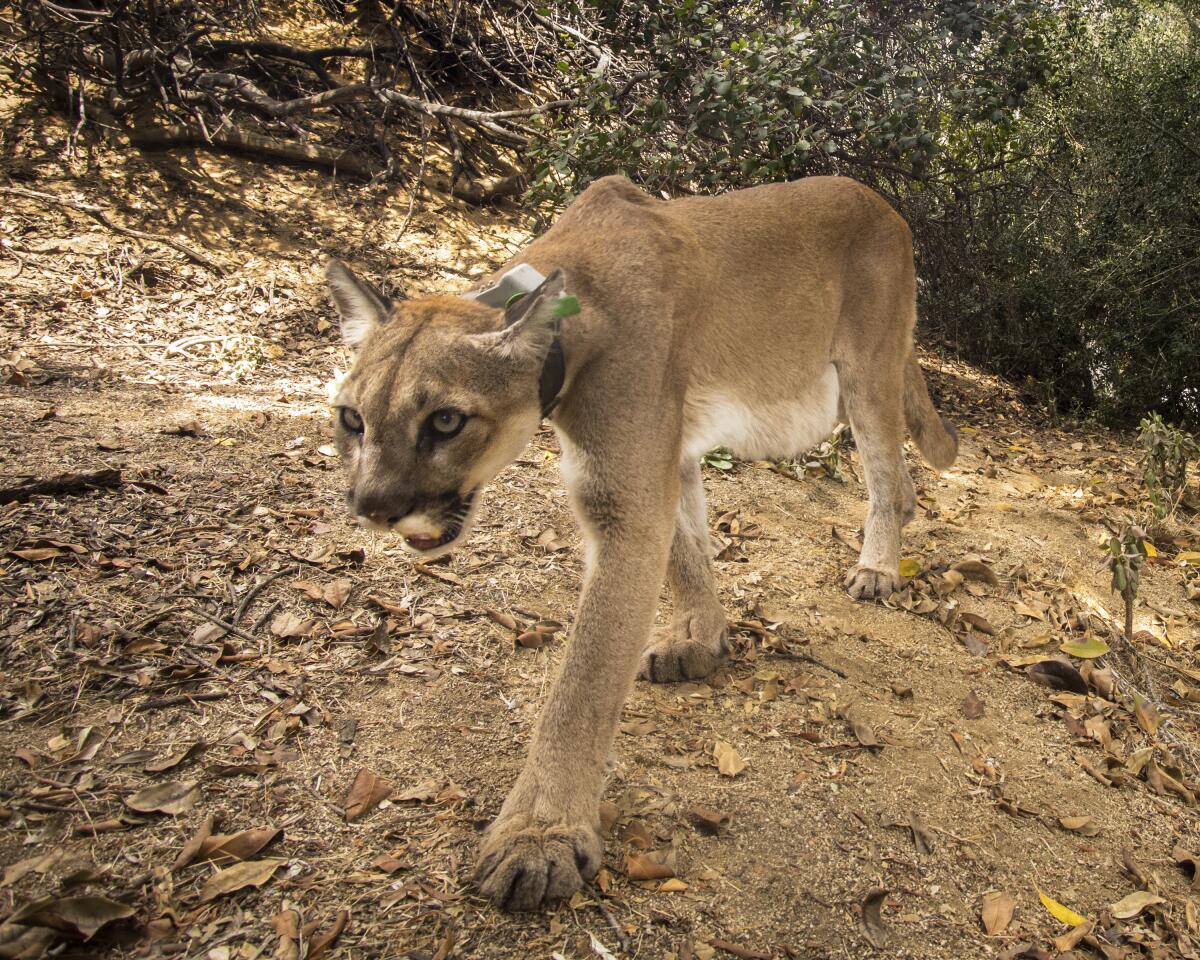Mountain lion badly burned in Bobcat fire dies nearly a year after release back into wild

- Share via
A female mountain lion rescued last year after being badly burned in the Bobcat fire has died, 10 months after her release back into the wild, the California Department of Fish and Wildlife said.
The big cat, named Monrovia after the city where she was found, was the first cougar to be rescued, rehabilitated and released in California, wildlife officials said. She was found in the San Gabriel Mountains in September 2020 with burns to all four paws that were so bad she could barely walk.
After a few weeks of rehabilitation, she was released back into the area.
Data from the satellite collar she wore after her rehabilitation indicated Monrovia died around Aug. 15, Fish and Wildlife reported on Friday. Her remains were found not far from where she was rescued during the fire, at the bottom of a deep canyon in the San Gabriel Mountains.
The mountain lion’s rescue last fall was seen as a success in the midst of a blazing wildfire that burned over 115,000 acres of the Angeles National Forest and threatened endangered species.
“The reason we are finding that rescuing this one mountain lion is so fulfilling is that she isn’t just one wild animal — she is an ambassador,” Johanna Turner, an advisory committee member with the Cougar Conservancy, said at the time.
The bridge will allow mountain lions and other wildlife to cross safely over a busy stretch of the freeway used by an estimated 300,000 vehicles a day.
Biologists who worked with Monrovia last year estimated she was 6 or 7 years old. Fish and Wildlife officials confirmed that Monrovia could successfully hunt and kill prey when she was returned to the wild, noting that mountain lions can live up to 10 years.
After her rehab, Monrovia claimed a territory spanning roughly 67 square miles between Azusa and Burbank. Officials watched the seemingly healthy cougar multiple times via trail cameras, trekking the landscape alone and in one instance, walking with a male cat.
Wildlife officials were able to retrieve Monrovia’s body after some time, but a field necropsy was ultimately unable to determine the cause of death. The data received from her satellite collar indicated she lived in the urban-wildland interface for nearly a year, without any human-mountain lion conflict in the San Gabriel foothills.
“Life can be treacherous for mountain lions in the wild,” Fish and Wildlife officials said in a statement. “They can succumb to vehicular strikes, fights with other lions, accidents while trying to kill prey, poaching and other hazards.”
Monrovia’s rescue highlights the impact that wildfires can have not only on human lives, but also on the animals that inhabit those areas. Several baby mountain lions, as well as bears and raccoons, were rescued from wildfires in Northern California last year.
And this year’s fire season is proving hazardous to wildlife as well. A baby bear was found with scorched paws in the Tamarack fire zone in late July and taken to a wildlife care center. But the 6-month-old cub escaped his enclosure and tunneled under an electric fence less than two weeks after he was rescued.
In September, an adult bear was found limping with third-degree burns to its paws in the burn zone of the Caldor fire. State wildlife officials had to euthanize the animal to spare it from inevitably being overtaken by flames.
The Veterinary Emergency Response Team at UC Davis has cared for more than 2,000 animals injured or displaced by California wildfires this year.
More to Read
Sign up for Essential California
The most important California stories and recommendations in your inbox every morning.
You may occasionally receive promotional content from the Los Angeles Times.












